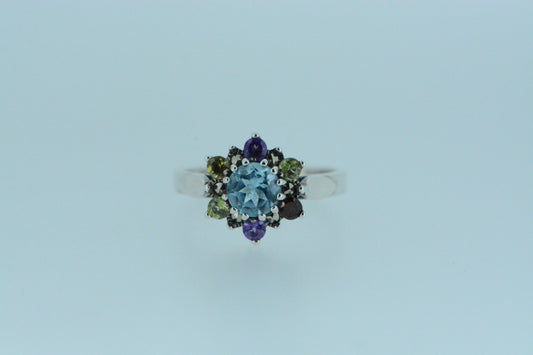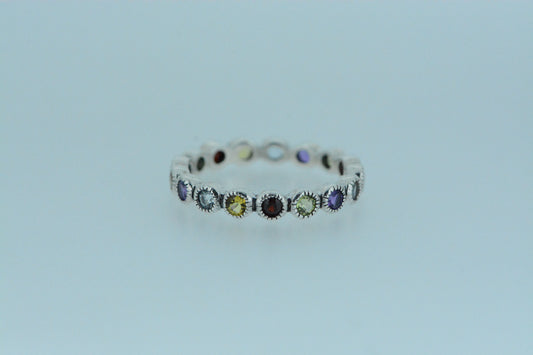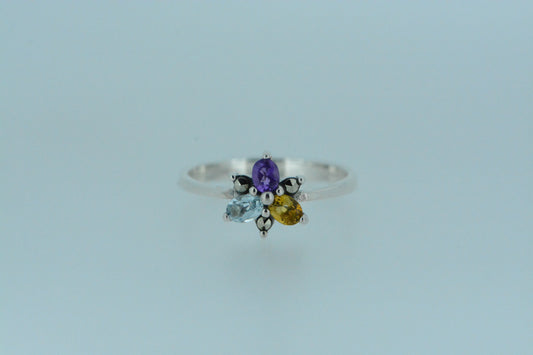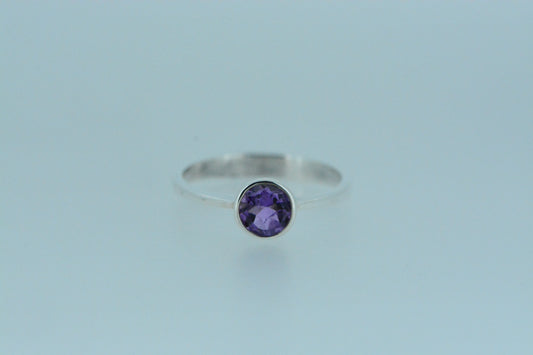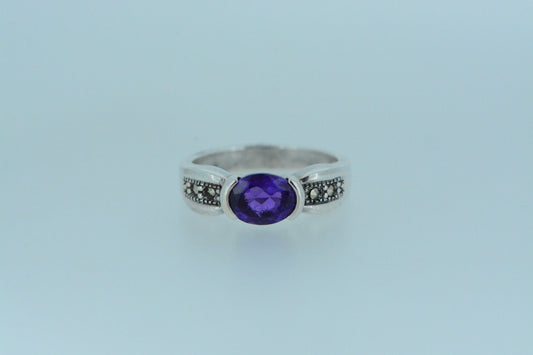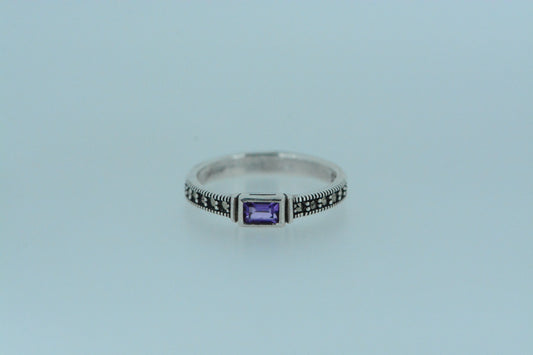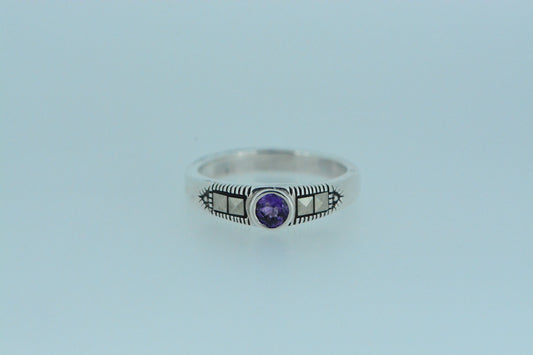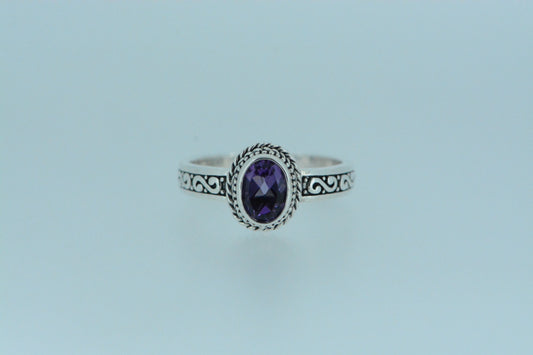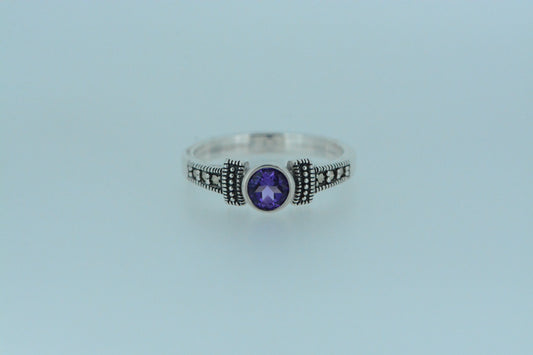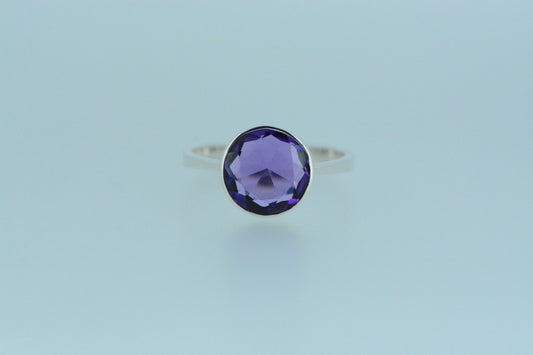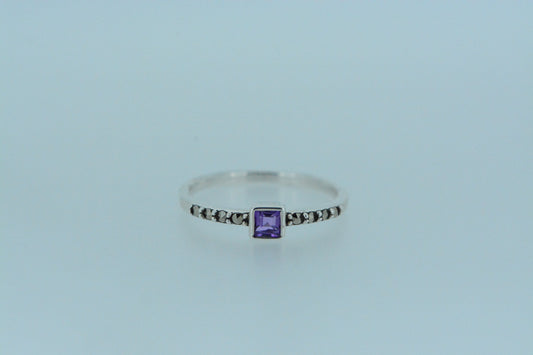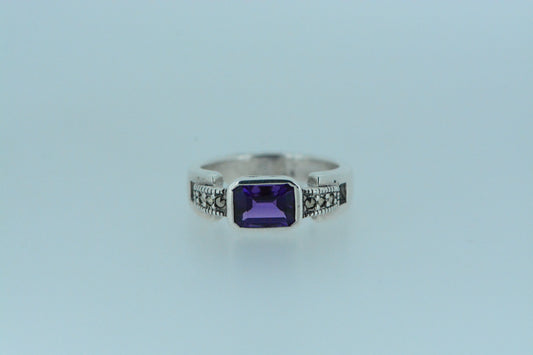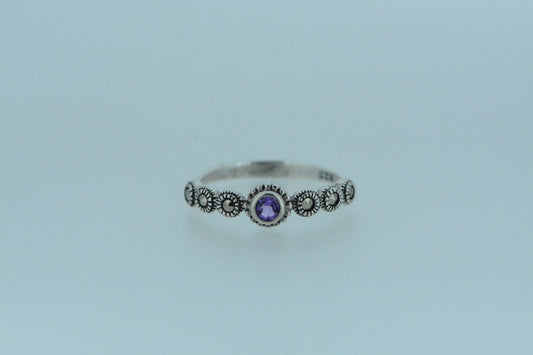Amethyst Gemstone: Rich Hues, Deeper Significance
Amethyst is one of the most popular and revered gemstones in the world, known for its rich purple hues and long history of symbolism and use in fine jewellery. A variety of quartz and natural Amethyst has captivated people for centuries, from ancient civilisations to modern-day collectors and gemstone jewellery enthusiasts. Its stunning colour, exceptional clarity, and relatively affordable gemstone price have made it a highly sought-after gemstone, frequently used in silver rings, necklaces, earrings, and other pieces of jewellery. Amethyst is also the birthstone for February, further enhancing its popularity and cultural significance.
How Amethyst Forms in Nature
Amethyst is a variety of quartz, composed primarily of silicon dioxide (SiO2), and gets its distinctive purple colour from trace amounts of iron and other trace elements within the crystal structure. When exposed to heat and light, the iron impurities within amethyst crystals are altered, producing its signature violet to purple hues. The colour of genuine Amethyst can range from pale lilac to a deep, rich purple, with the most prized amethysts being those with a vivid, deep purple colour with flashes of red.
Amethyst forms in geodes, cavities in volcanic rocks, and in granite and pegmatite veins. The crystals themselves are typically long and prismatic, often growing in clusters. Natural amethyst gemstones are usually found in their natural state in large deposits. When mined, they are cut into various shapes, including round, oval, cushion, and emerald cuts, to enhance their natural brilliance and beauty.
Key Traits of Amethyst
The defining feature of Amethyst is its vibrant purple colour, which can range from pale lavender to a dark, royal purple. The most valuable amethysts are those with a deep, saturated purple hue, often with a reddish or bluish tint. The gemstone's colour is a significant factor in determining its quality and value, with darker stones generally being more prized. However, Amethyst's appeal lies in its wide range of purple shades, allowing it to suit various tastes and preferences.
Amethyst is a durable gemstone with a hardness of 7 on the Mohs scale, making it suitable for a variety of jewellery settings, including rings, earrings, pendants, and bracelets. However, like all gemstones, they should still be treated with care to avoid scratches or damage, particularly when set in rings that may be subject to frequent wear.
The gemstone is also known for its clarity and brilliance, with many amethysts being relatively free of inclusions. When cut well, Amethyst displays exceptional sparkle, which makes it stand out in jewellery pieces. Its transparency allows light to pass through, creating a bright, vivid display of colour, particularly when it is faceted in a way that maximizes the play of light.
Where Amethyst Comes From
Amethyst is found in several locations around the world, with major deposits in countries such as Brazil, Uruguay, Zambia, and Russia. Brazil is one of the largest producers of Amethyst, with vast deposits found in the states of Minas Gerais and Rio Grande do Sul. These Brazilian amethysts are known for their deep purple colours and are often of excellent clarity. Uruguay, known for its rich amethyst deposits, produces some of the finest specimens, particularly those with a dark, intense purple hue.
Other notable sources of Amethyst include Zambia, where the gemstone is found in high-quality, deep purple varieties, and Russia, where amethysts from the Ural Mountains are prized for their vivid colours. The United States, particularly in Arizona, also has notable amethyst deposits, though they tend to be less saturated in colour compared to other sources.
Amethyst is also abundant in smaller deposits found in various other regions, including Africa, Sri Lanka, and India. These stones may vary in colour and quality depending on the location, but they all share the same beautiful purple hue that has made amethyst crystal jewellery so beloved worldwide.
Amethyst's Spiritual and Cultural Legacy
Amethyst has a long history of cultural and symbolic significance. In ancient Greece, the gemstone was believed to have protective properties, particularly in preventing intoxication. The name "amethyst" itself is derived from the Greek word amethystos, meaning "not intoxicated," as the Greeks believed the stone could ward off drunkenness and keep the wearer clear-headed. Amethyst was often worn as an amulet by the Greek and Roman nobility to protect them from excess and maintain their composure.
In the Middle Ages, Amethyst was associated with royalty and the Church, often used in ecclesiastical jewellery and crowns due to its rich purple colour, which symbolized power, wealth, and piety. It was also believed to bring spiritual insight and was used by monks to aid in meditation. In addition, Amethyst has been thought to promote calmness, healing energy, and clarity of thought, making it a popular choice in spiritual and chakra jewellery practices.
Throughout history, Amethyst has also been considered a symbol of balance, peace, and protection. In modern spiritual practices, it is often associated with the third eye and crown chakras, believed to help with intuition, mental clarity, and spiritual connection. Some people wear amethyst jewellery as a means of attracting positive energy, promoting inner peace, and enhancing their spiritual growth.
Amethyst in Modern and Classic Jewellery
Amethyst's rich colour and affordability have made it a popular choice in jewellery design. Its versatility allows it to be set in a wide range of styles, from classic and vintage to contemporary and bold. The gemstone is often used in rings, earrings, necklaces, bracelets, and pendants, either as a focal point or as a complementary stone in a multi-gem design.
Amethyst is frequently set in sterling silver jewellery, with the cool tones of silver accentuating its vivid purple hue, while the warmth of gold can bring out the gemstone's deeper, richer colours. Amethyst silver rings, in particular, offer timeless appeal at a price point that makes them accessible without compromising on elegance.
The gemstone is particularly popular in engagement rings, where its striking colour and historical significance make it a unique alternative to traditional diamonds. Amethyst is also widely used in vintage-style jewellery, where it adds a sense of opulence and elegance to the design.
Conclusion
Amethyst is a truly remarkable gemstone, beloved for its stunning purple colour, exceptional clarity, and rich history. Whether set in contemporary or vintage jewellery designs, Amethyst remains a popular choice for those seeking a gemstone that offers both beauty and meaning. Its wide range of purple hues ensures it appeals to a variety of tastes, while its symbolism and healing properties make it a timeless addition to any jewellery collection. With its combination of different colours, durability, and affordability, Amethyst continues to be a cherished gemstone, beloved by jewellery enthusiasts and collectors worldwide.
Whether set in solid sterling silver, shimmering yellow gold, or paired with diamond rings, amethyst rings with their deep hues and timeless charm make a stunning finishing touch, echoing their reverence since ancient times, whether as a meaningful gift or a bold solitaire to complement any style.


